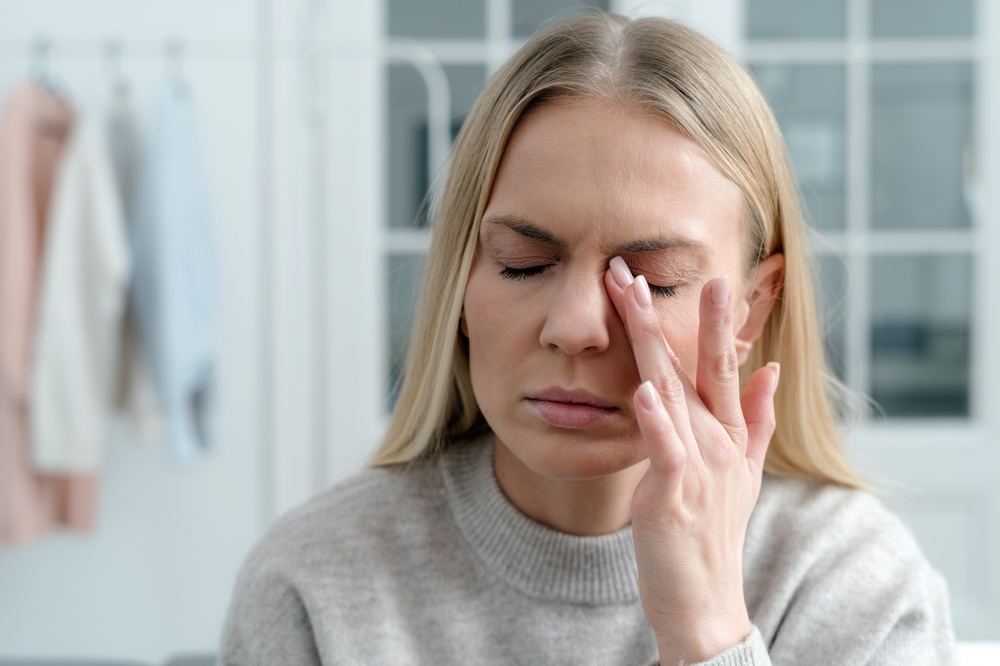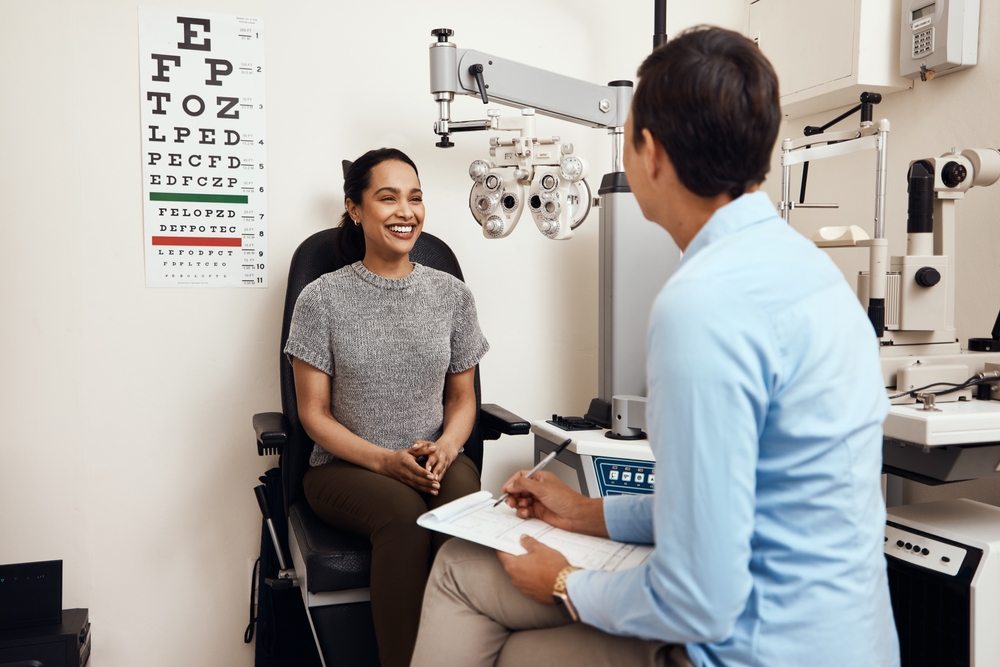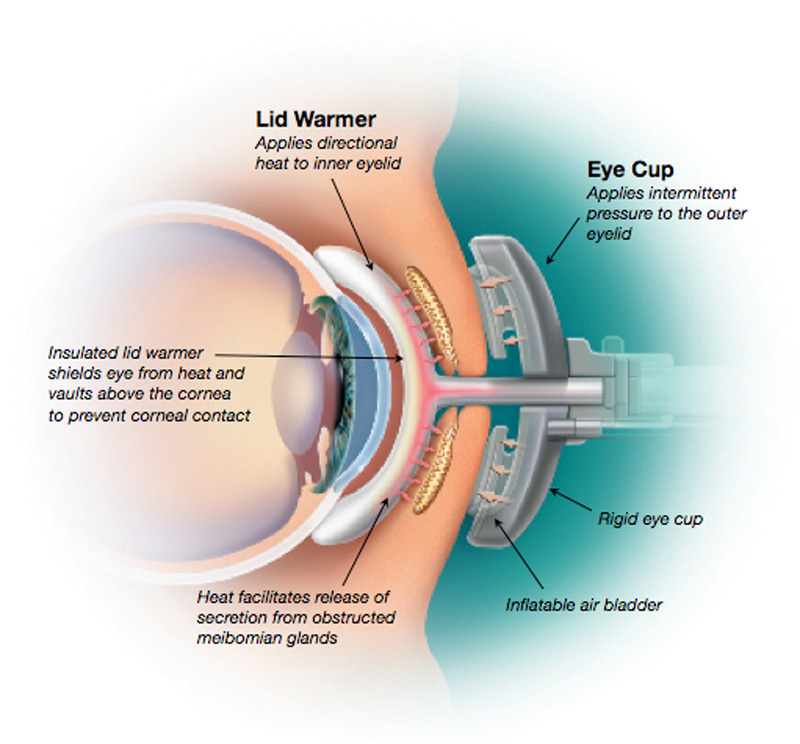Home » Blog » When is it Time to Consider Dry Eye Treatment, Anyway?
When is it Time to Consider Dry Eye Treatment, Anyway?
Posted by: Georgia Eye Partners in Eye Health

Do your eyes always seem like they are irritated? Part of the constant irritation could be because they are too dry.
Dry eyes are common and can happen for several reasons. They may even be due to a chronic eye condition called dry eye syndrome.
If your eyes frequently feel irritated, you may want to see your eye doctor to determine what’s causing your symptoms and how to potentially treat them. They’ll be able to figure out what’s behind your eye irritation, whether it’s dry eyes or something else.
They’ll also be able to recommend treatment. You should consider dry eye treatment if you are diagnosed with dry eyes.
But it can also be helpful to know if you may have dry eyes before you see an eye doctor so you know what to expect. Keep reading to find out when it could be time to consider dry eye treatment, anyway!
What are Dry Eyes?

Dry eyes occur if your eyes are not producing enough tears or the tears lack the proper nutrients to create healthy tears. Healthy tears must have three components to make up the tear film.
These include:
The Mucus Layer
The mucus layer is the innermost layer of the tear film that allows the tear film to spread evenly. It also helps hydrate and lubricate the surface of the eye.
The Oil Layer
The oil layer is the outermost layer of the tear film secreted by meibomian glands in the eyelids. It prevents rapid evaporation of the water layer of the tear film and stabilizes it. It also keeps the surface of the eye smooth to ensure you can see clearly.
The Watery Layer
The watery layer of the tear film contains necessary substances like water and protein. It helps wash away debris and foreign particles while maintaining the hydration of the cornea and providing oxygen and nutrients to it.
All tear film components are crucial and must be in working order. If they cannot work correctly, this can lead to uncomfortable symptoms like dry eyes.
Dry eye symptoms include:
- Burning or stinging feeling in the eyes
- Redness
- The feeling of grit in the eye
- Tearing
- Mucus build-up in the eyelashes
- Itchy eyes
- Eye fatigue
- Difficulty wearing contact lenses
Your eyes can become dry for several reasons. One of these reasons could be your environment.
If it’s very hot, windy, or generally dry outside or in your home, your tears may evaporate too quickly, making your eyes dry. However, when your environment triggers dry eyes, changing your environment will alleviate your symptoms.
If your symptoms don’t go away or only improve a little, it could be because you have chronically dry eyes.
Do You Have Dry Eyes? It’s Time to Do Something About Them!
Chronic Dry Eye: Dry Eye Syndrome
Dry eye syndrome is an incredibly prominent eye condition, especially in older adults and women. It’s also quite common if you have other autoimmune diseases.
What causes dry eye syndrome may vary, but the most common cause is an issue with meibomian glands being blocked. Decreased aqueous production is also a common cause of dry eye symptoms. Your eyes produce a tear film, a layer of tears that coats your eyes and is refreshed each time you blink.
This tear film keeps your eyes healthy, flushing out debris and bacteria. When your eyes struggle to produce tears correctly, it’s usually because they cannot produce enough of one or more tear components.
More commonly, dry eye syndrome often occurs because the glands that produce the oil layer, the meibomian glands, become blocked, so your tear film lacks protection, and your tears evaporate too quickly. This condition is called Meibomian Gland Dysfunction, or MGD.
Dry eye syndrome can have severe consequences for how healthy your eyes are if left untreated. If your eyes are always dry, they become more prone to infection. Infection can lead to corneal ulcers and permanent corneal scarring, which affects your vision. However, treatment can alleviate your uncomfortable dry eye symptoms and prevent these consequences.
When Should You Seek Help from Your Eye Doctor?

Seeking help is necessary and should occur if you notice constant, frequent eye irritation that has yet to improve. If you have dry eye symptoms that don’t go away when you change your environment, it’s likely because you have dry eye syndrome.
Most patients start with over-the-counter treatments for dry eyes, like artificial tears, nutritional supplements, and even something as simple as using a humidifier in your bedroom, office, or living room. However, if you have dry eye syndrome, more effective prescription treatments are likely necessary to help you get the lasting relief you need.
Professional Dry Eye Treatments Available at Georgia Eye Partners
At Georgia Eye Partners, we provide a range of advanced in-office and prescription treatments for dry eyes, utilizing some of the most cutting-edge solutions available.
Before treating dry eye syndrome, we use diagnostic testing. These tests help personalize a treatment plan just for you.
TearLab
TearLab measures electrolyte concentration in your tears, a specific osmolarity number generated by TearLab’s lab using chip technology. Your osmolarity number helps your eye doctor determine if you have dry eye syndrome, and what level of severity it is. TearLab uses a highly calibrated device to measure and determine osmolarity simply and painlessly.
In addition to prescription eye drops or other prescription treatments like neuro-stimulation nasal sprays, your eye doctor may recommend one or more of these treatment options:

Lipiflow
LipiFlow is an in-office therapy designed to treat the root cause of evaporative dry eye in most patients, which is blocked meibomian glands. It uses a device applied under the eyelids with gentle heat, and pressure from the front to soften clogged oil from the meibomian glands.
Softening clogged oil from the meibomian glands helps the oil flow more freely, so your tear film no longer lacks a robust lipid layer.
TearCare
Another effective treatment option we have to treat MGD is TearCare. TearCare is a device designed specifically to help with Meibomian gland dysfunction by applying localized heat therapy to your eyelids. Here’s how it works:
- Application of Heat: TearCare uses flexible, adhesive pads that are placed on your eyelids. These pads deliver gentle, controlled heat to the Meibomian glands. The heat helps to soften and melt any thickened oil secretions that are clogging the glands.
- Gland Expression: After the heat treatment, the doctor will perform a gentle manual expression of your Meibomian glands. This helps to clear out the clogged glands and allows the glands to start functioning more effectively.
- Comfort and Convenience: The treatment is quite comfortable and takes only 15 minutes. The design of the TearCare system allows you to blink naturally during the procedure, making it a very patient-friendly experience.
- Effectiveness: Many patients experience significant relief from their symptoms after the treatment. The improvement in gland function can help restore a healthier tear film, reducing dryness and irritation.
The goal is to restore and maintain the natural function of your Meibomian glands over time.
Intense Pulse Light Therapy (IPL)
IPL, or intense pulse light therapy, uses pulsed light emitted from a handheld device. Like LipiFlow, it’s an in-office therapy.
But instead of just being applied over your eyelids, it’s applied all around the eyes. The pulsed light shuts down blood vessels that cause inflammation.
After intense pulse light therapy, the glands releasing secretions are expressed, which helps improve gland dysfunction and help the glands stop stagnating. Closing blood vessels near the skin’s surface can decrease inflammation and redness, often contributing to meibomian gland dysfunction.
Intense pulse light therapy is also used to treat rosacea, ocular rosacea and facial discoloration. It’s useful as a dry eye treatment because inflammation often leads to dry eyes.
Reducing inflammation has been shown to help with meibomian gland dysfunction, allowing oil from the glands to flow more freely so your tear film can have a better lipid layer.
Punctal Plugs
Punctal plugs are small, medical devices that are used to treat dry eyes. They are tiny and typically made of silicone, collagen or a gel. They are inserted into your tear ducts, which are small openings on the inner corners of your upper and lower eyelids.
The main purpose of punctal plugs is to block the tear ducts. Normally, tears drain away from your eyes through these ducts and into your nose. By blocking the tear ducts, the plugs keep the tears on the surface of your eye for a longer time. This helps to keep your eyes moist and relieves the symptoms of dryness.
The procedure is usually quick and painless. We’ll use a special instrument to insert the plug into your tear duct. You might feel a little pressure, but it shouldn’t be painful. There are also different types of plugs – some are temporary and dissolve on their own, while others are more permanent but can be removed if necessary.
Many patients notice an improvement fairly quickly, often within a few days. The effect can vary depending on the individual and the severity of the dryness. We’ll monitor your progress and make any necessary adjustments to ensure you get the best results.
Amniotic Membranes
Amniotic membranes is a regenerative biological treatment for dry eyes. That means it uses actual biological material, in this case, amniotic tissue. Amniotic tissue is naturally moisturizing and highly biocompatible with your eye.
Using amniotic tissue on dry eyes can help rejuvenate the cornea, improving dry eye symptoms in patients who cannot find relief using previous treatments and therapies. These are similar to a contact lens and is applied to the eye in-office.
It then stays on your eye for 2-5 days before fully dissolving into your eye. If needed, treatment can be repeated to improve results if one treatment doesn’t fully alleviate your dry eyes.
Having dry eyes can be frustrating and uncomfortable, but you no longer have to live with these symptoms. If you’ve tried eye drops, artificial tears, or at-home remedies without success, it’s time to see a professional. Together, you can devise a treatment plan and determine the root cause of your dry eye symptoms.
If your eyes feel irritated and dry, don’t wait longer to get help. Contact Georgia Eye Partners today in Atlanta, GA, to schedule a consultation with one of our dry eye experts. Isn’t it time to get the relief you deserve?